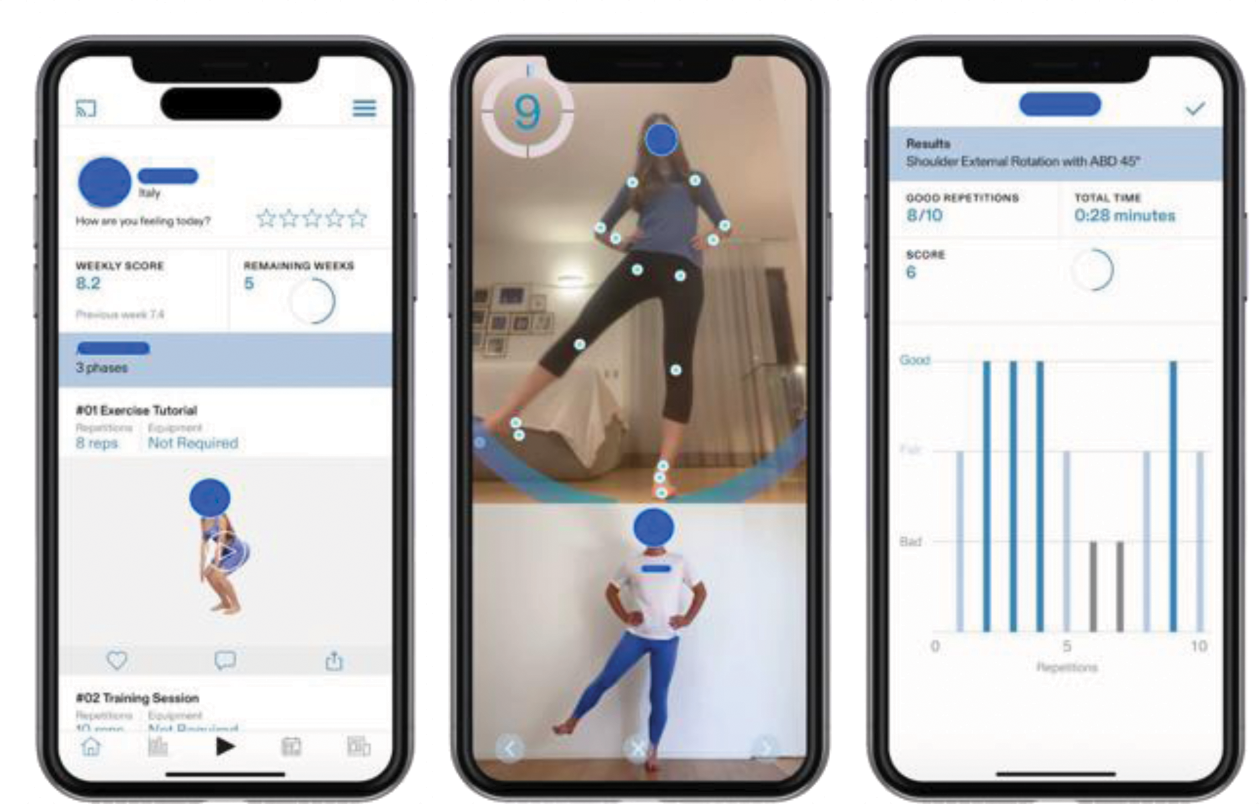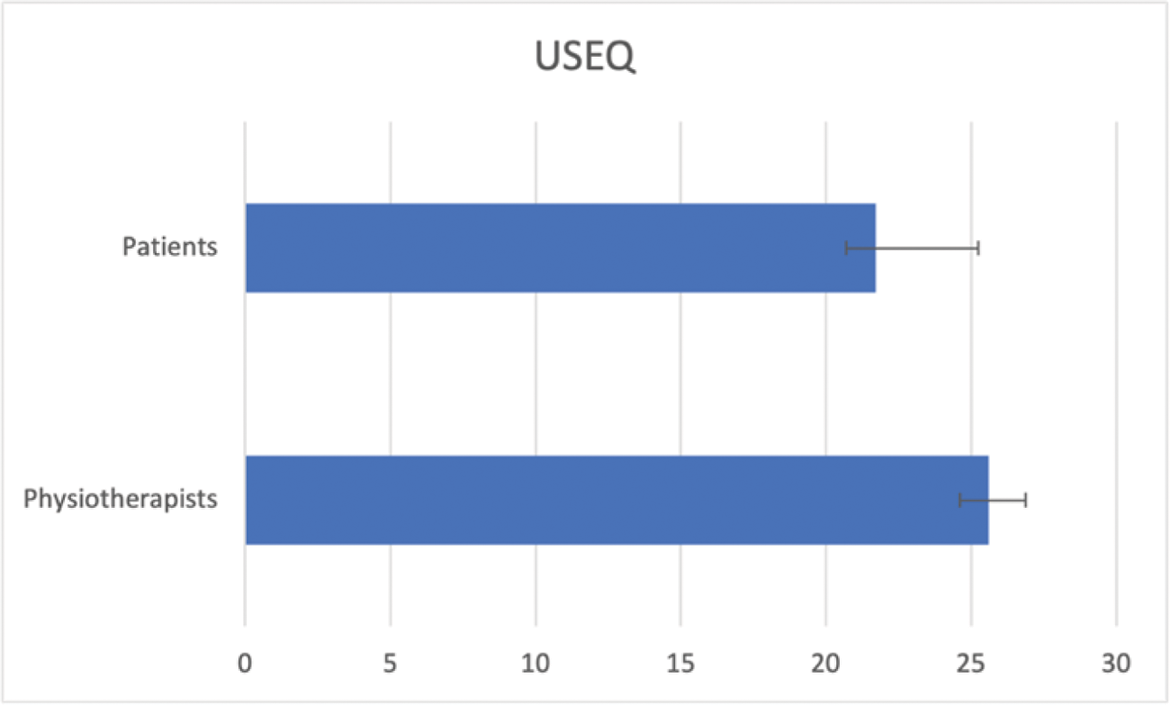

Background: International guidelines recommend combining pharmacological and non-pharmacological treatments for axSpA patients. Physiotherapists often rely on personalized exercise programs and self-management strategies (home-based exercises) to complement standard care and enhance patient outcomes [1]. Poor adherence to these programs can negatively impact results and increase healthcare costs. Digital Therapeutics (DTx) is a subset of digital health that encompasses various healthcare technologies used independently or alongside medications and therapies to optimize patient care and outcomes. DTx are emerging as a new form of therapeutic interventions but data on axSPa are scarce.
Objectives: The primary aim was to evaluate the satisfaction of physiotherapists and axSpA patients using a DTx-based home rehabilitation program. Secondary objectives included assessing adherence, pain levels, depression, activities of daily living, and joint tenderness.
Methods: A non-randomized, uncontrolled clinical trial was conducted with an intervention group comprising 20 patients and 10 physiotherapists recruited between June and July 2023 from Hospital S. Anna e S. Sebastiano, Rheumatology department in Caserta. Patients inclusion criteria were: age between 20 and 75 years, axSpa in remission status, basic technological proficiency, and ownership of an Android or iOS smartphone. The DTx used in the study allowed the physiotherapists to customize the rehabilitation programmes by selecting the frequency and type of exercises. Patients received home exercises programs on their devices and were guided by a virtual instructor providing real-time feedback. The technology, accessible to all, used the front camera of the patient’s personal smartphone or tablet to detect movements and offer real-time corrections and guidance. At T0, patients were trained to use the app and were assessed using various scales (Zung Self-Rating Depression Scale, Modified Health Assessment Questionnaire, Modified Ritchie Articular Scales Index, Numeric Rating Scale). After 3 months, the patients were reassessed and the User Satisfaction Evaluation Questionnaire (USEQ) was administered to both patients and physiotherapists. The patients’ average adherence to the exercise programme was monitored by the Dtx app.
DTx app used

Results: The study included 11 males and 9 females with an average age of 55. After 3 months of DTx use, both physiotherapists (25.6 ± 1.2) and patients (21.7 ± 3.5) rated DTx as above-average in satisfaction according to USEQ. From T0 to T1, improvements were observed in ZSDS values (46.6 ± 14 to 39.5 ± 14.1; p < 0.05), MHAQ values (1.12 ± 0.4 to 0.8 ± 0.34; p < 0.05), MRAI values (11.75 ± 10.6 to 8.85 ± 8.67; p < 0.05), and NRS values (66 ± 13.3 to 40 ± 12). The average patient adherence to the exercise program was 41.55% ± 19.4. No adverse effects were recorded.
Result of the USEQ questionnaire patients and physiotherapists

Conclusion: The use of DTx in home exercises for axSpA patients is satisfactory for both patients and physiotherapists. Preliminary data indicate positive effects on depression, activities of daily living, pain levels, and adherence. A future randomized controlled trial (RCT) is necessary to validate these preliminary findings.
REFERENCES: [1] Ramiro S, Nikiphorou E, Sepriano A, Ortolan A, Webers C, Baraliakos X, et al. Asas-EULAR recommendations for the management of Axial Spondyloarthritis: 2022 update. Annals of the Rheumatic Diseases. 2022;82(1):19–34. doi:10.1136/ard-2022-223296.
Acknowledgements: We thank all the physical therapists, physicians, and people who performed this clinical study with professionalism and dedication.
Disclosure of Interests: None declared.